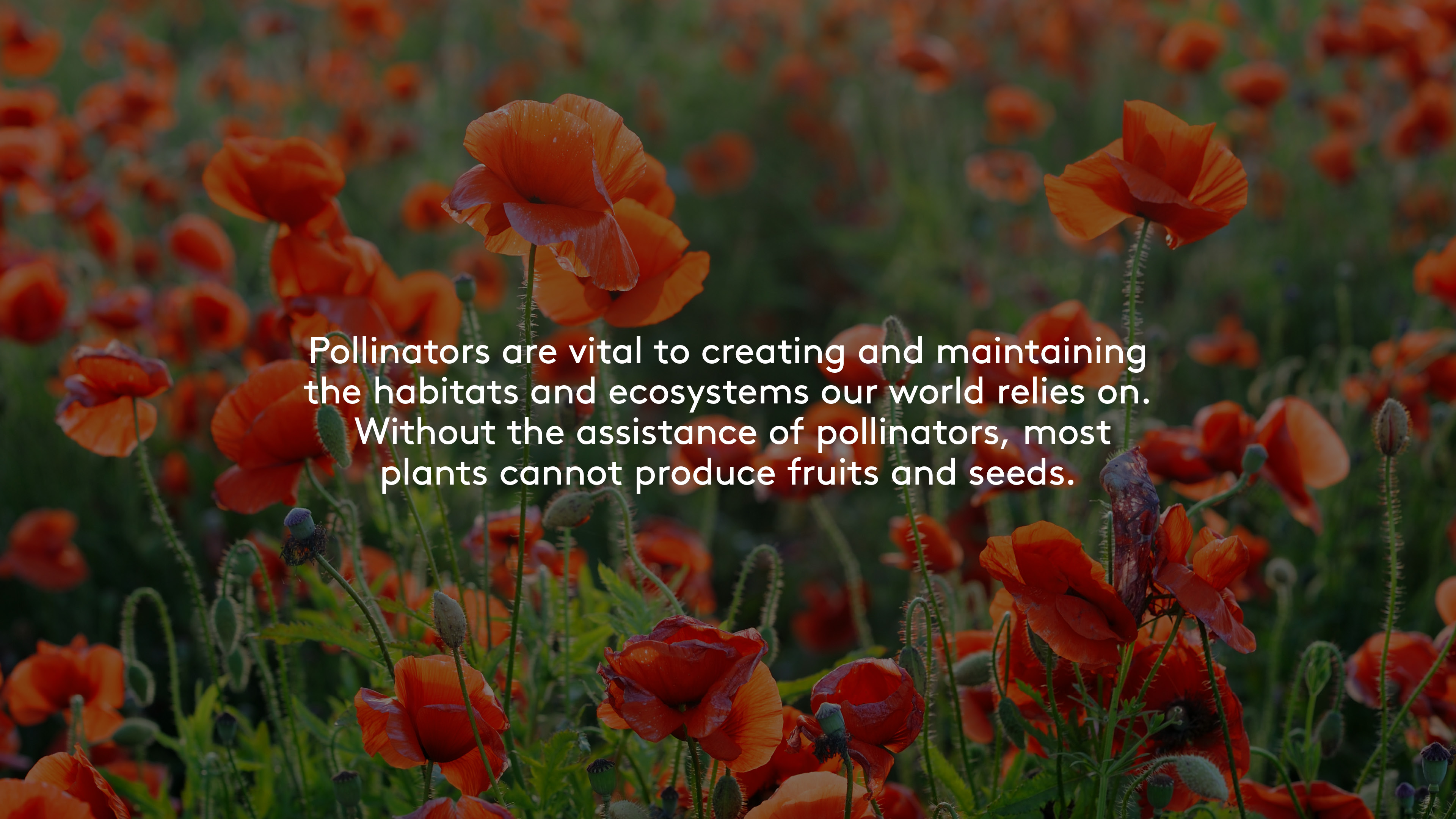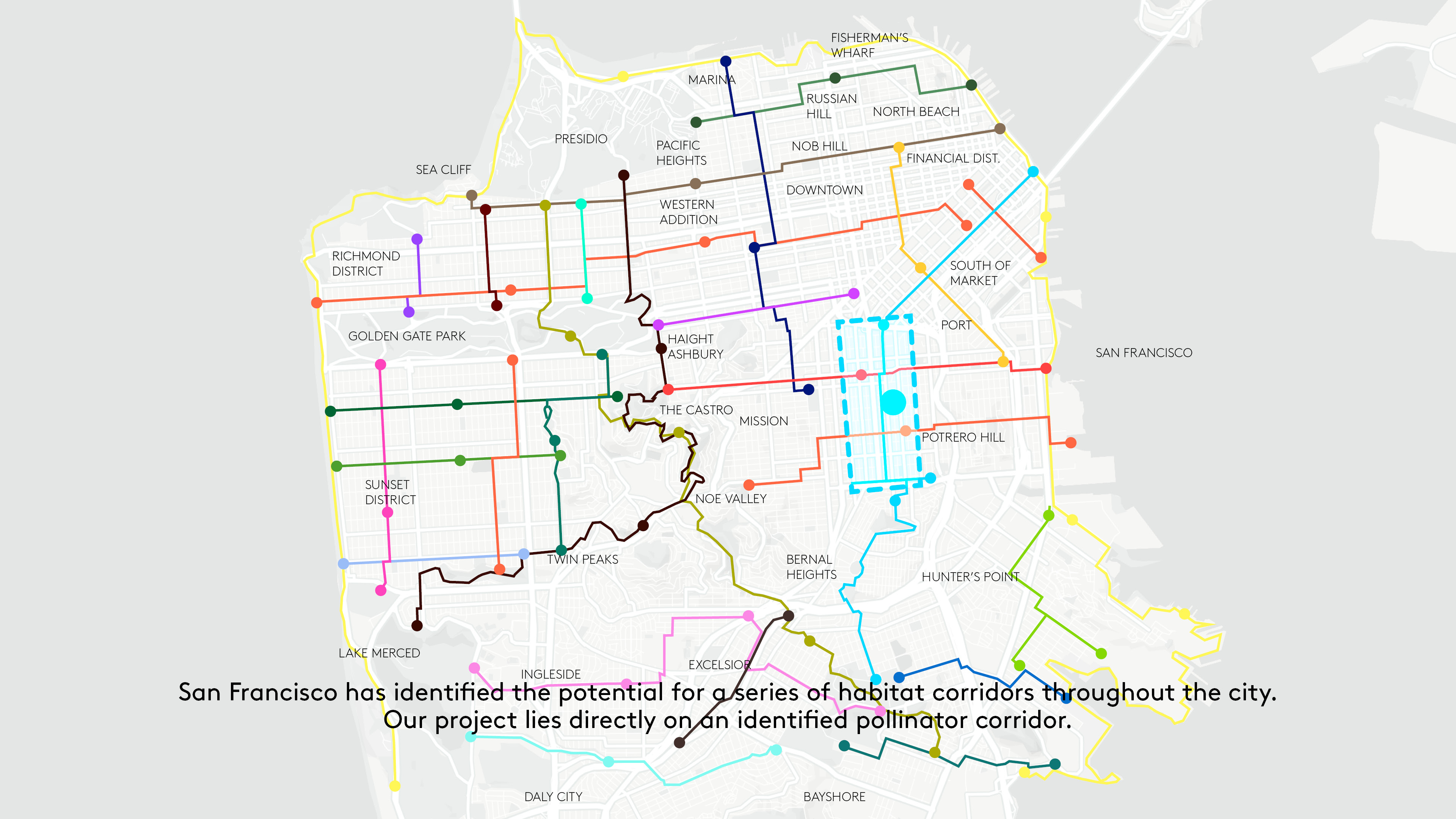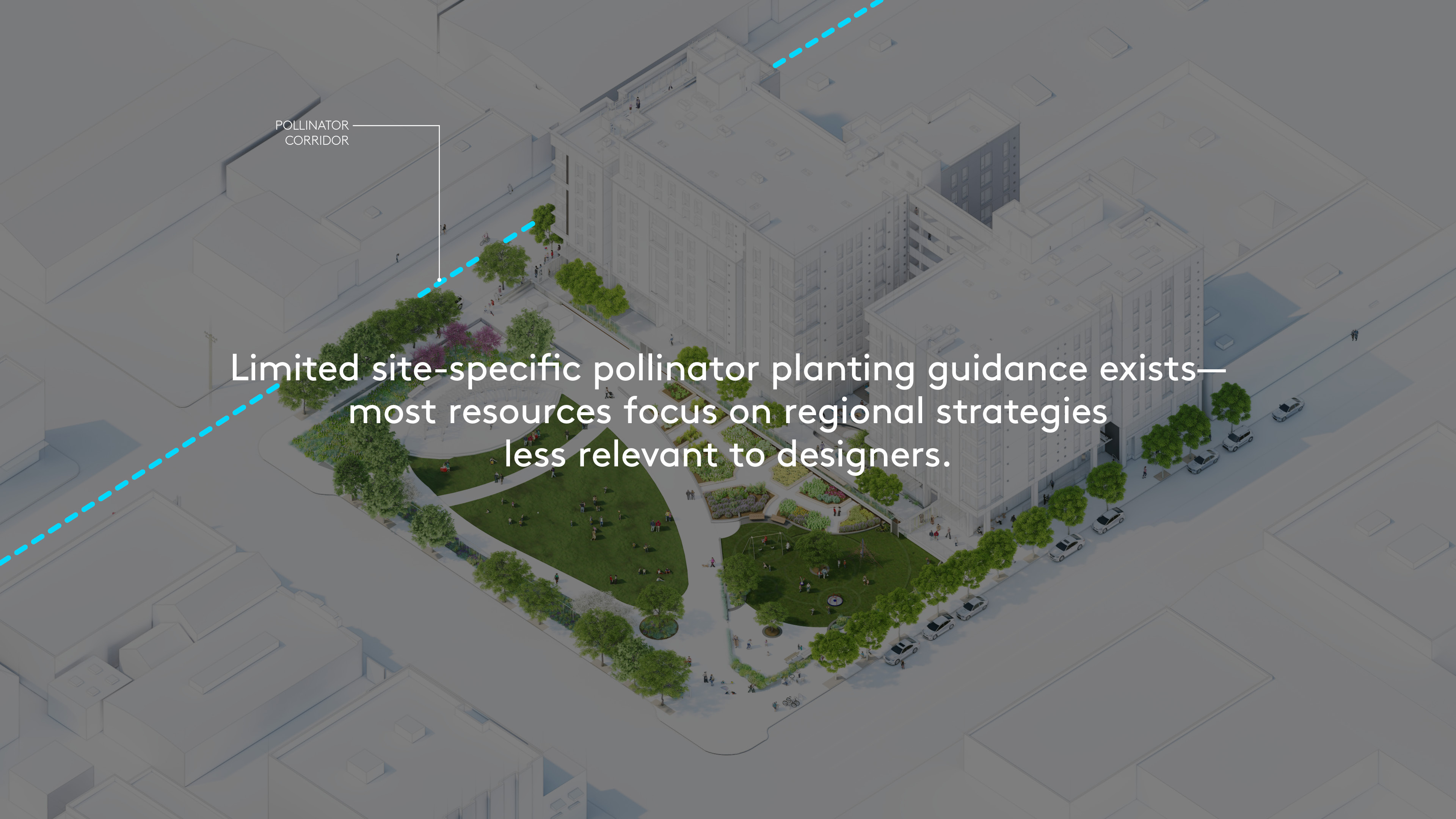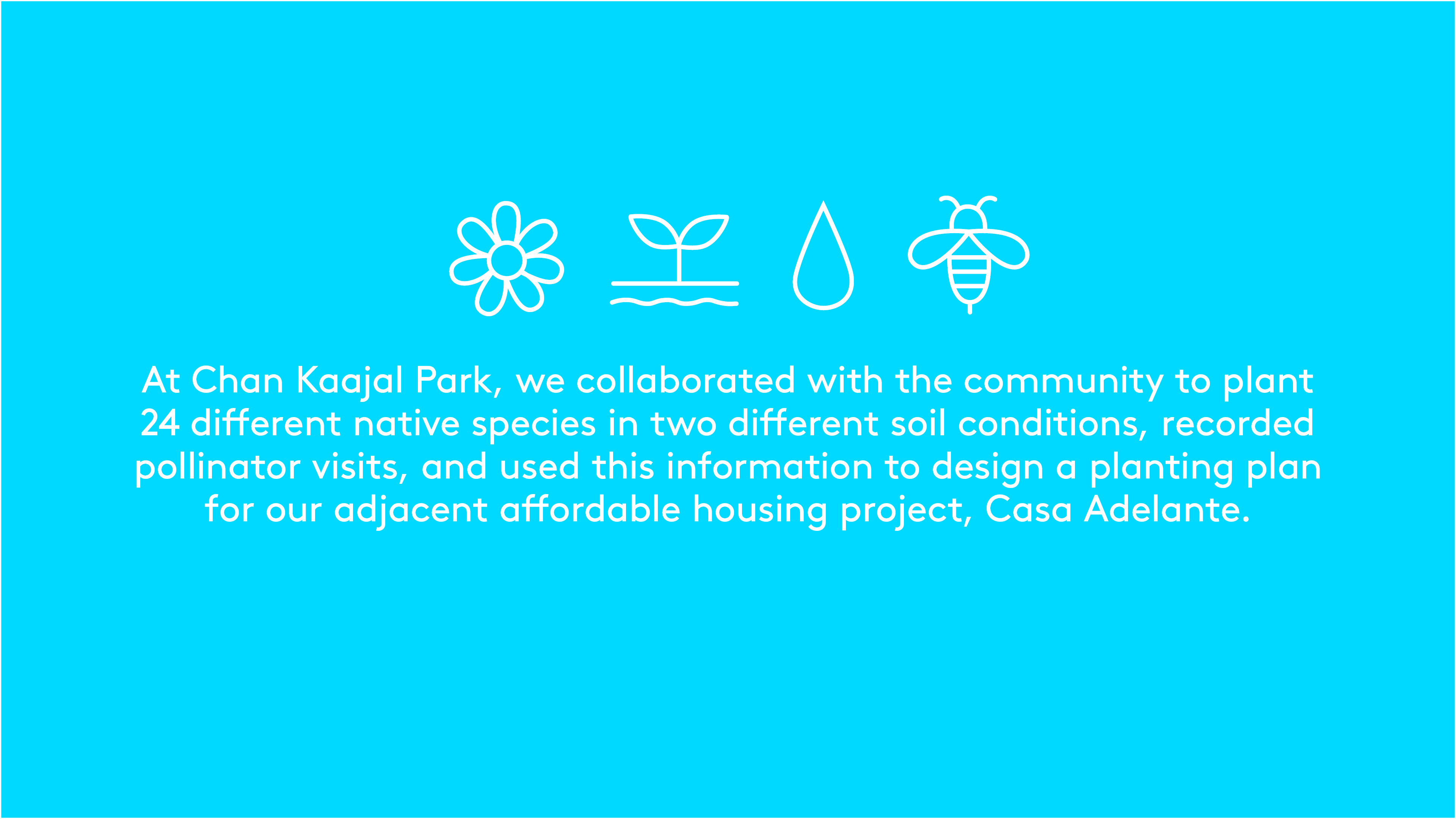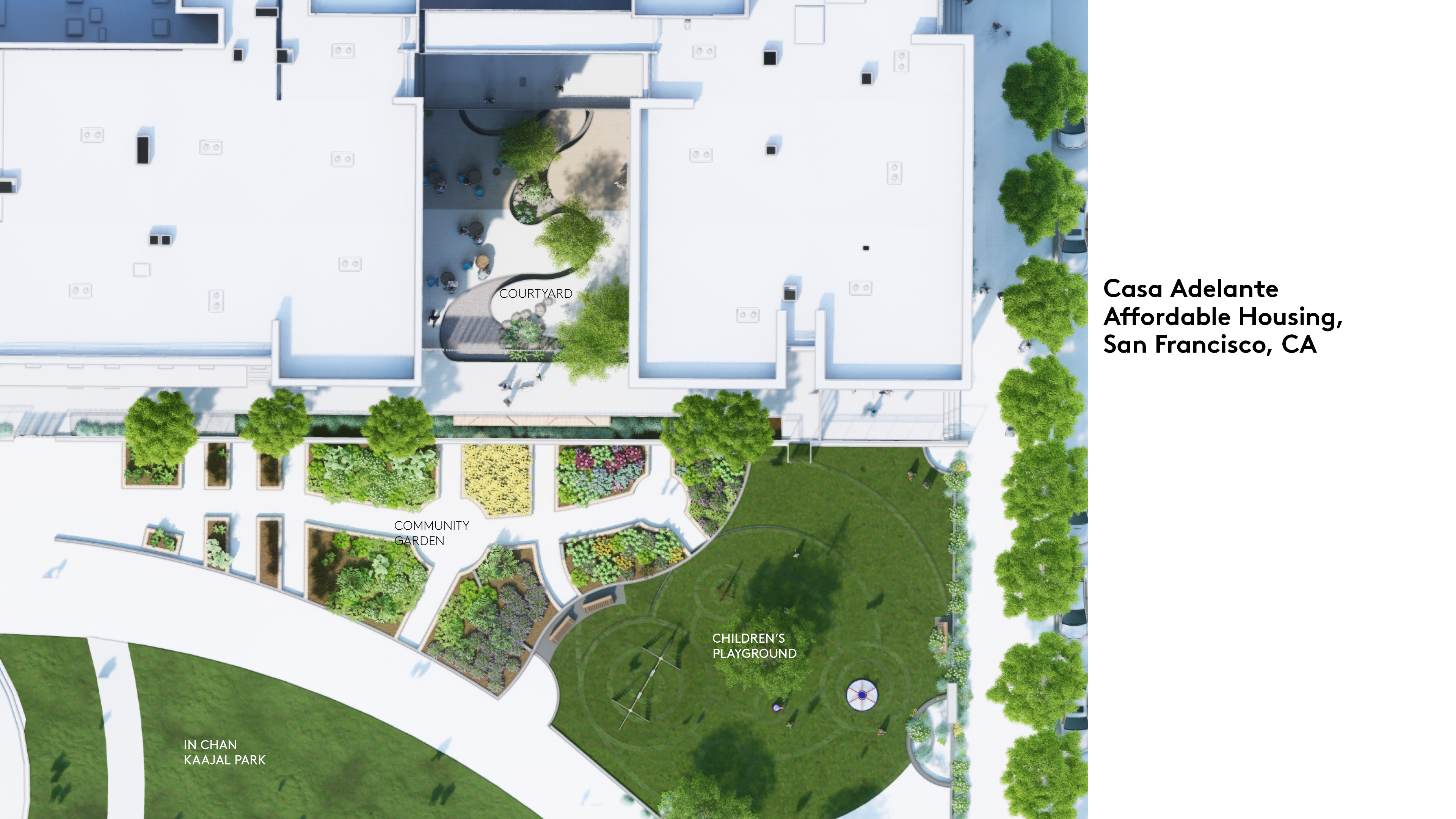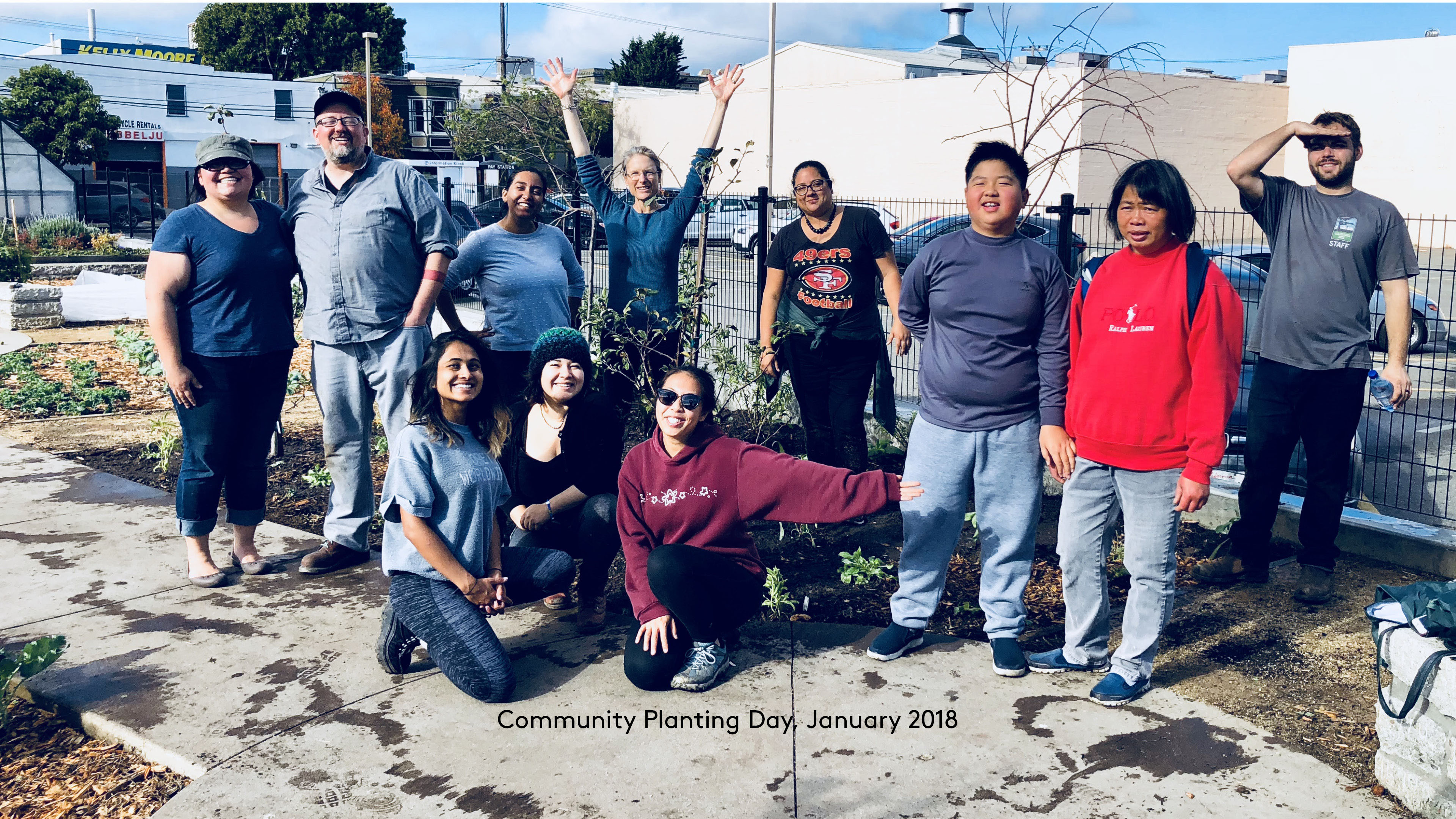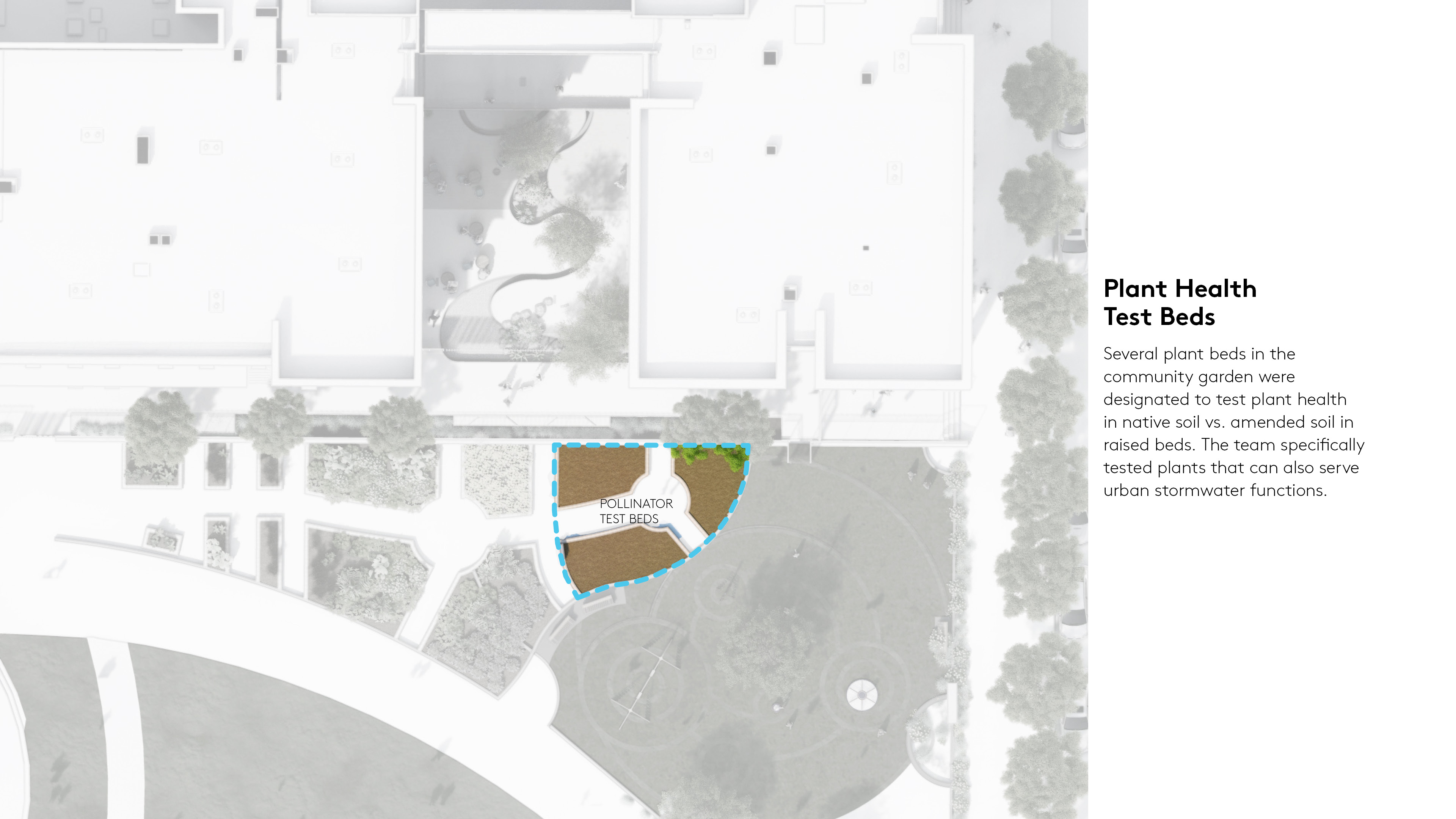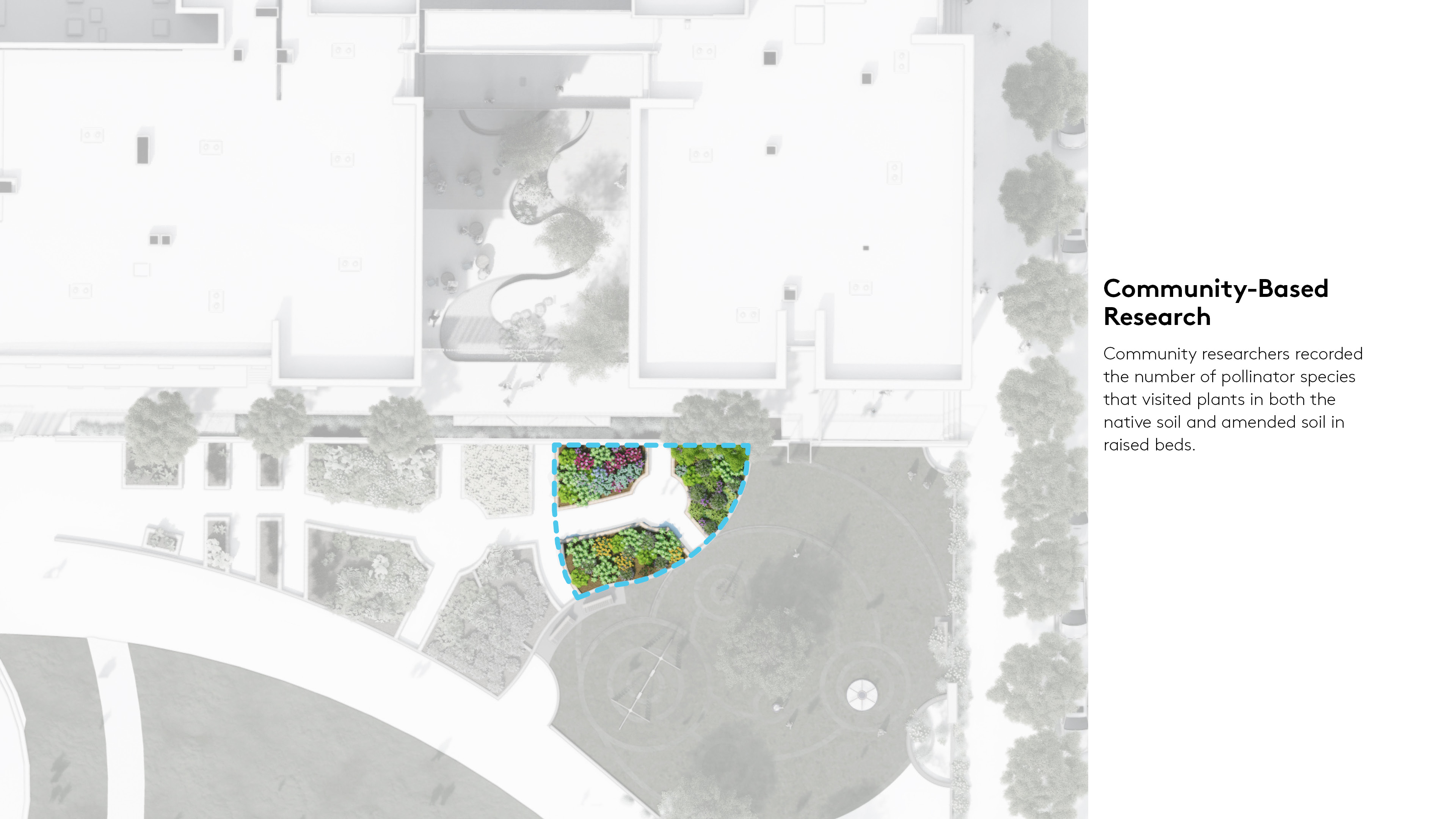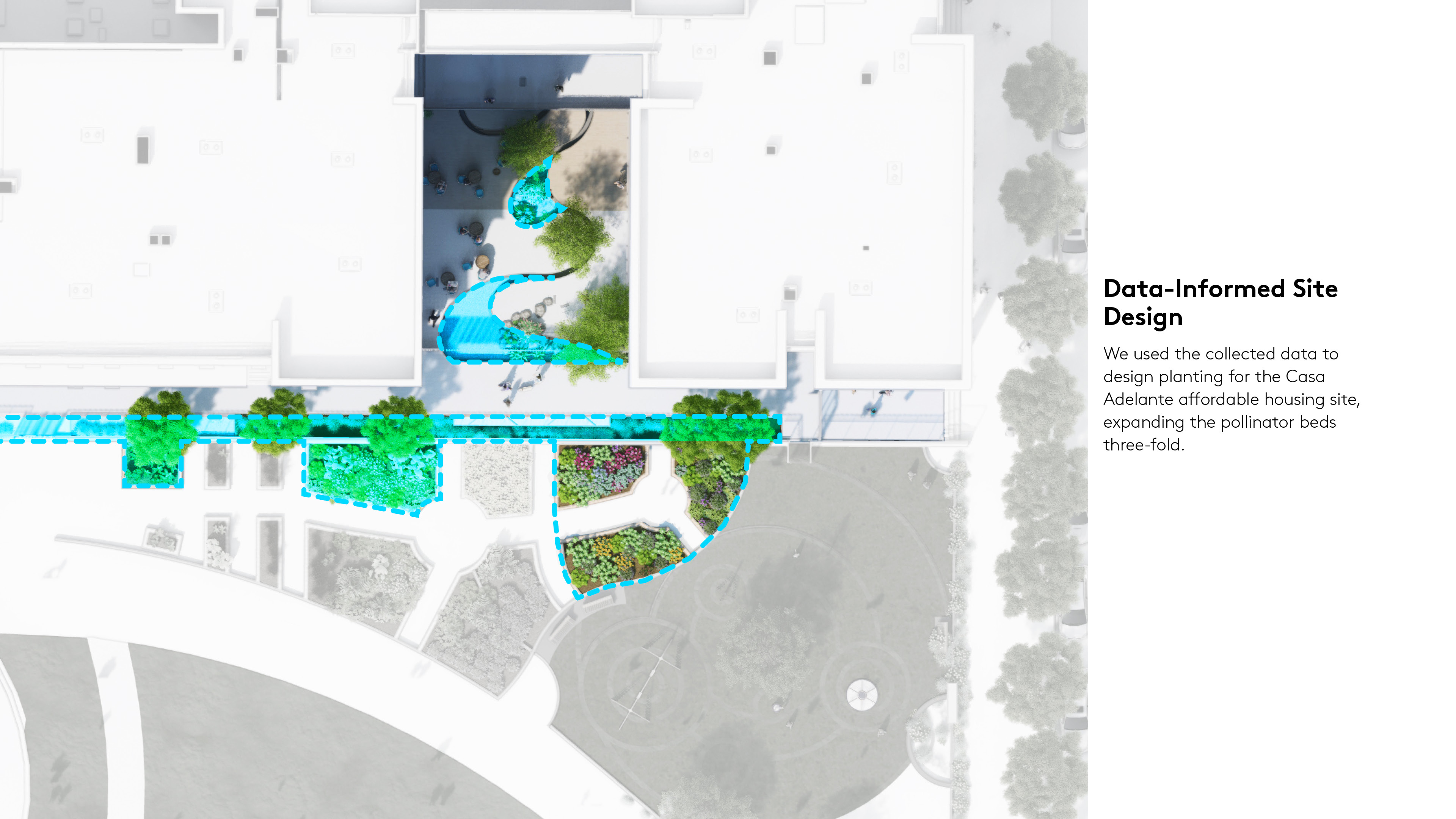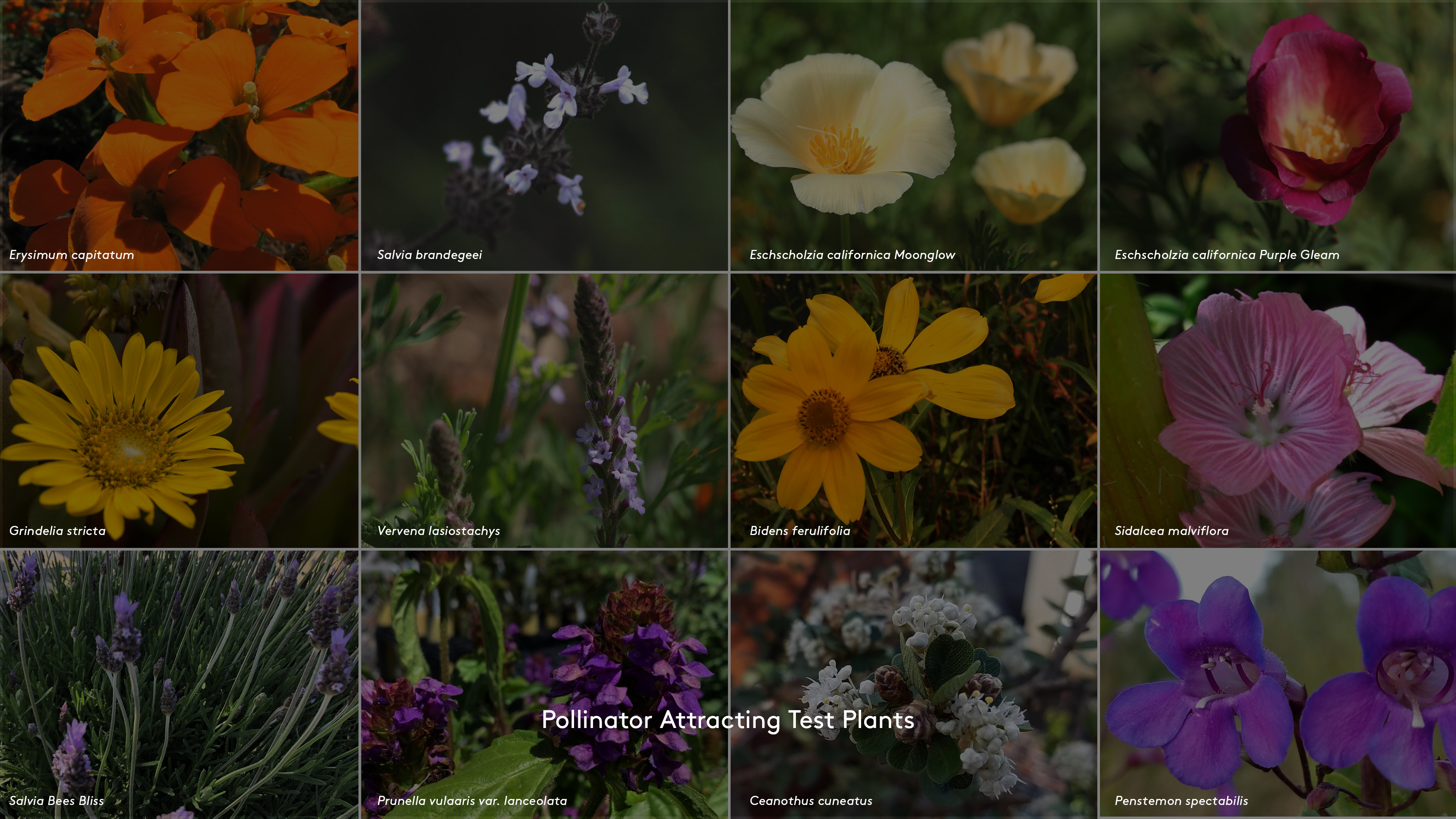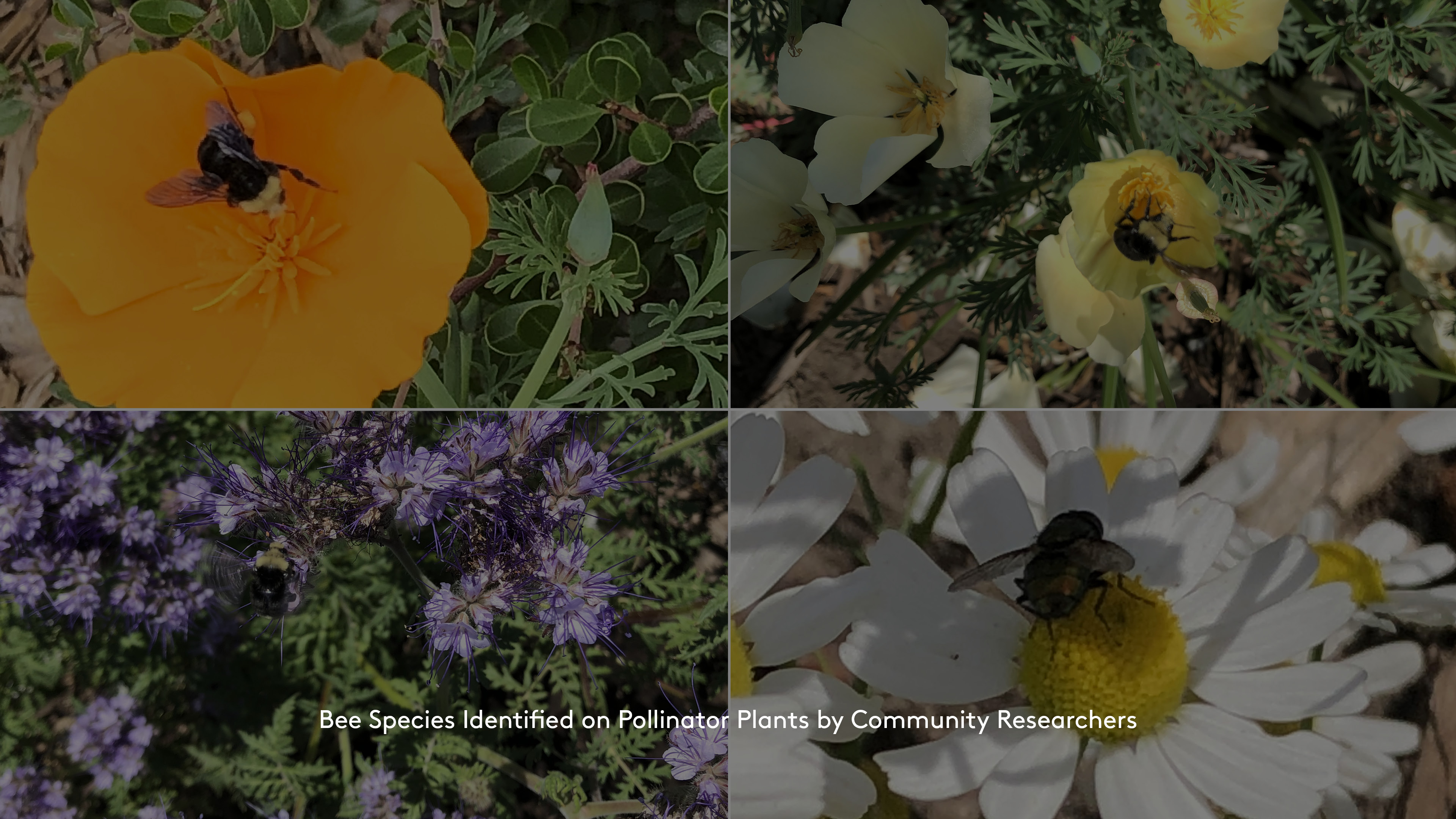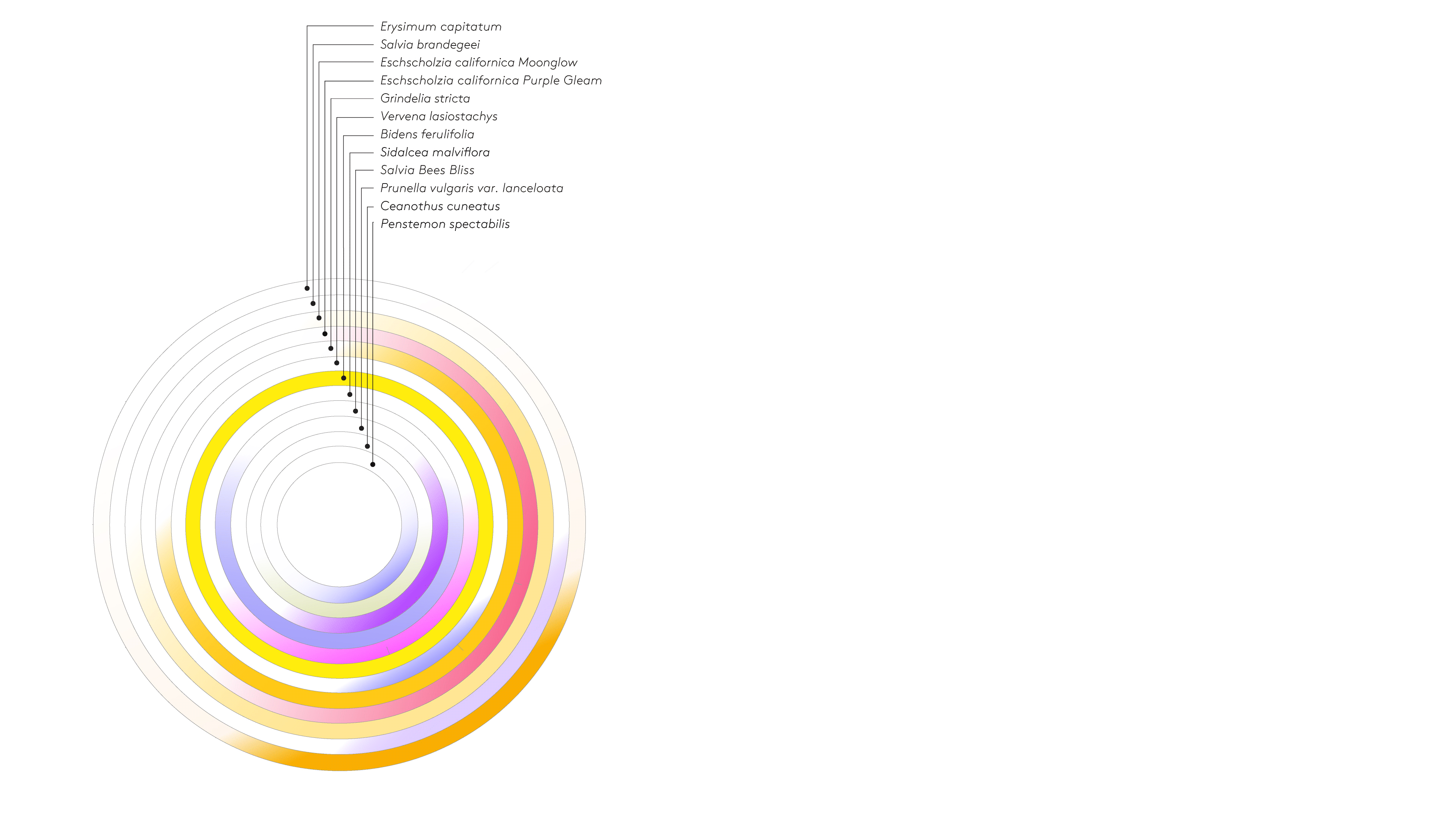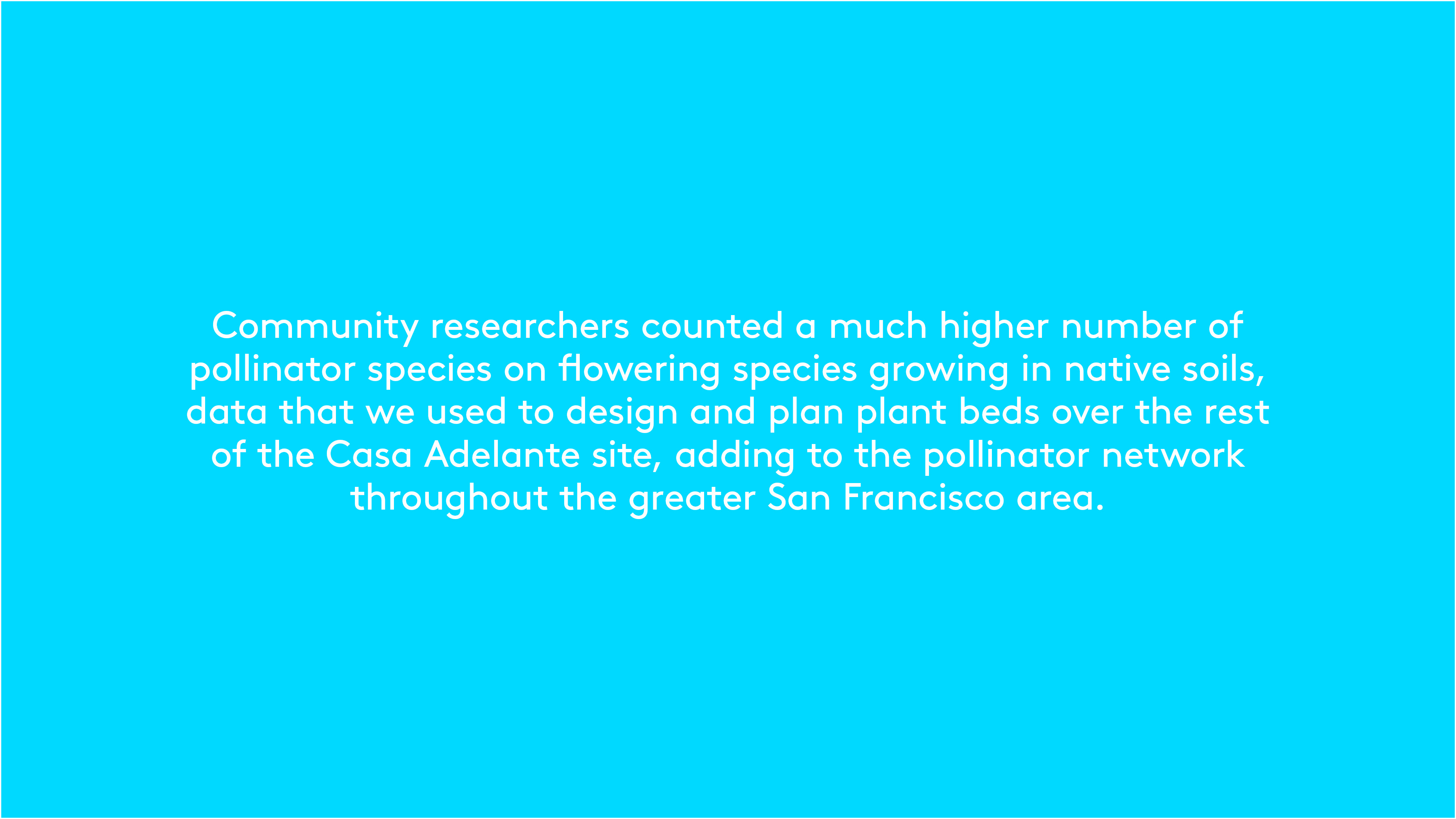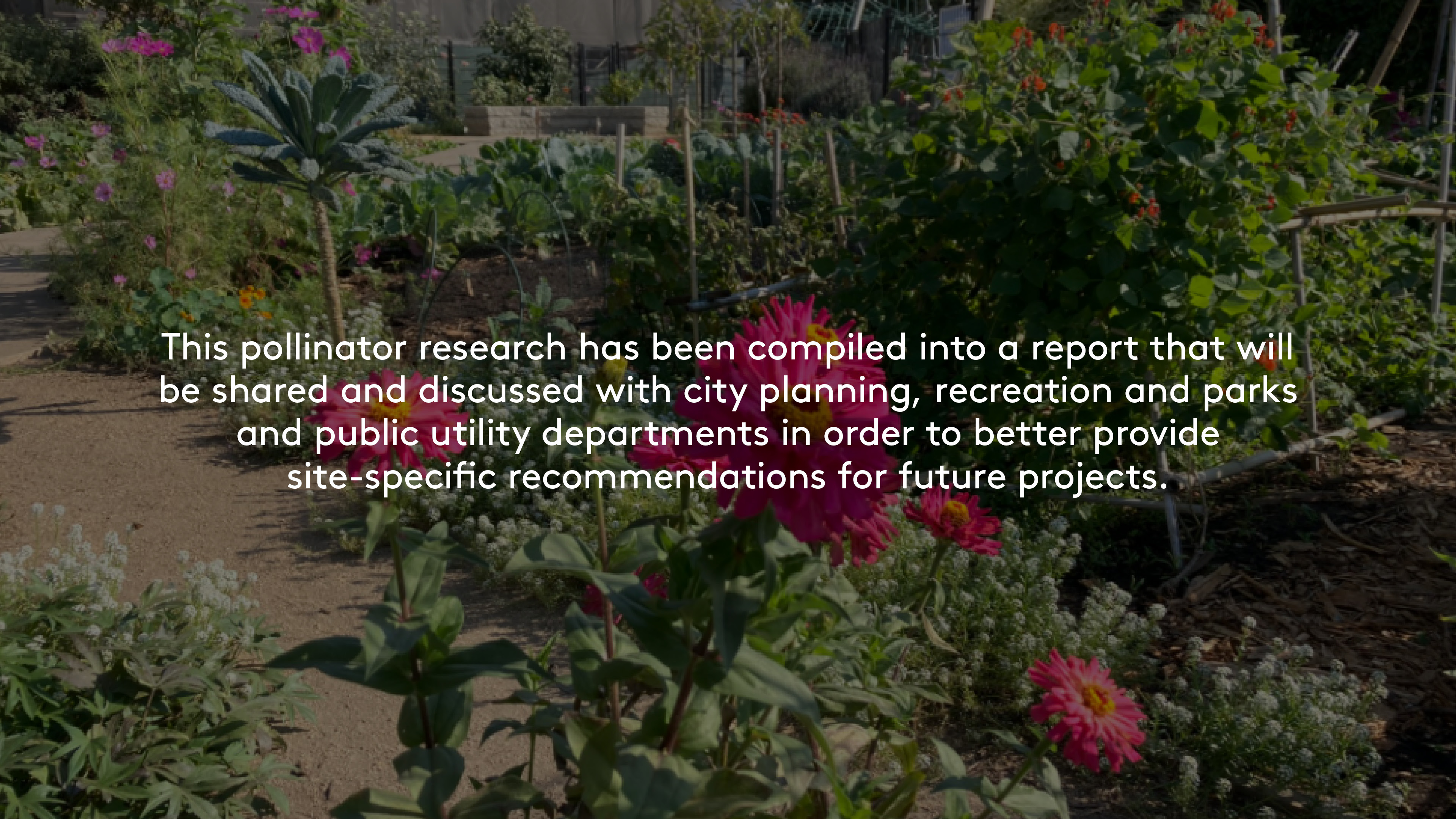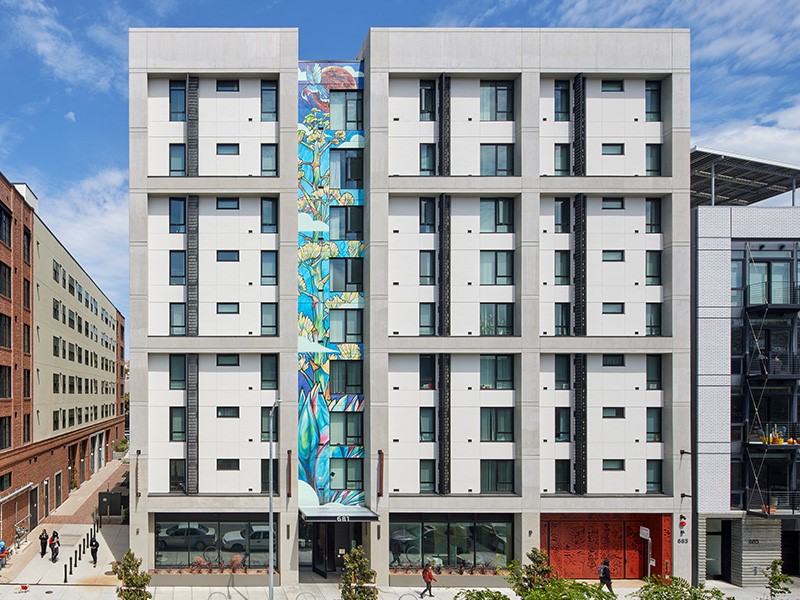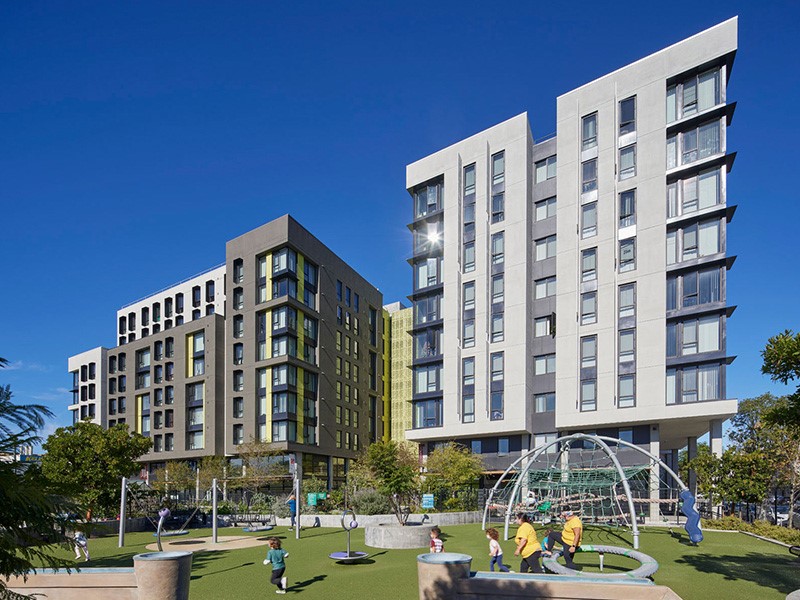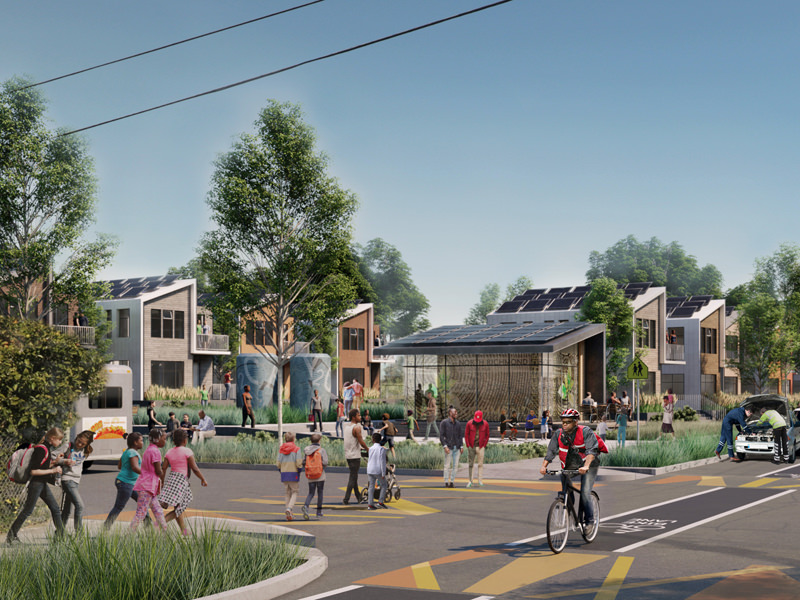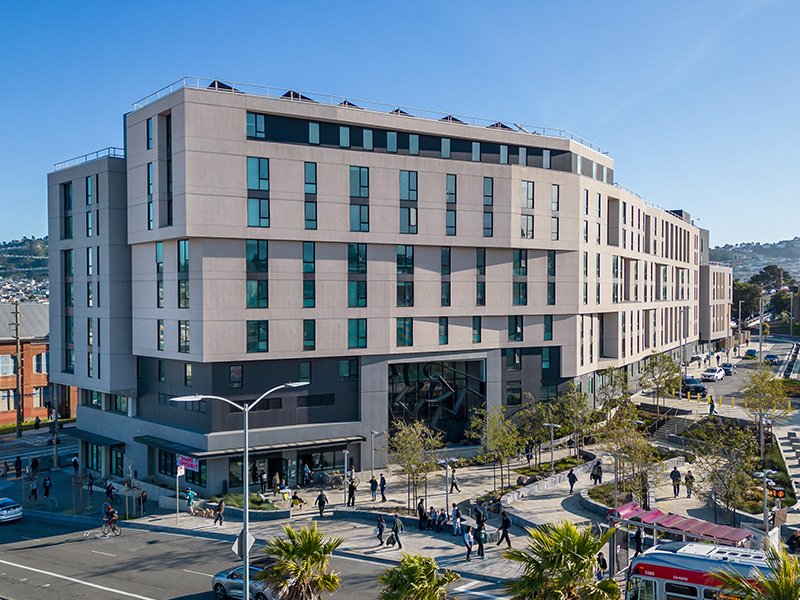Connecting Site Ecology and Community
Vision
Due to loss of habitat and wide-scale use of pesticides, pollinators are declining at alarming rates. These bees, butterflies and hummingbirds play a vital role in maintaining the ecosystems on which our world relies. While there is general guidance for which plant species contribute to pollinator habitat, there is a gap in more specific, site-level planting guidance.
Research
While the importance of urban pollinators is well-documented and the rise of pollinator programs in cities is making a difference to urban ecologies, less work has been done at the site level to research the relationships between pollinators and their attractor plant species to ensure that the pollinators are the native bee, bird and butterfly species that are the important link in a particular ecosystem.
Pollination Innovation tested various pollinator attractor plants near Casa Adelante at 2060 Folsom in order to understand the soil, water and maintenance needs for various species and, more critically, which plant species will attract native pollinators to the site. Working with neighbors and the San Francisco Recreation and Parks Department, the team planted 24 different California native pollinator attractor plant species in several plant beds in the community garden at Chan Kaajal Park. These planting beds tested plant health in native amended soil compared with full imported engineered topsoil in raised beds.
Community researchers and Mithun R+D team members recorded the number of native pollinators that visited the plants in both planting conditions, identifying the bee species per a research field guide provided by the UC Berkeley Urban Bee Lab. The collected data was used to draw conclusions about which plant type, bloom color and soil regime attracted the greatest number of diverse native pollinators.
Looking Forward
Results informed the planting design for courtyard and garden spaces at the adjacent Mithun-designed affordable housing at 2060 Folsom, establishing a larger pollinator precinct along the corridor identified in city planning documents as a critical pollinator pathway. Observations and conclusions from the research process will be shared with city planning, recreation and parks, and public utility departments. The process also holds promise as a potentially replicable model to be shared with community groups or designers to achieve hyper-local pollinator attractor planting guidance for other sites.



